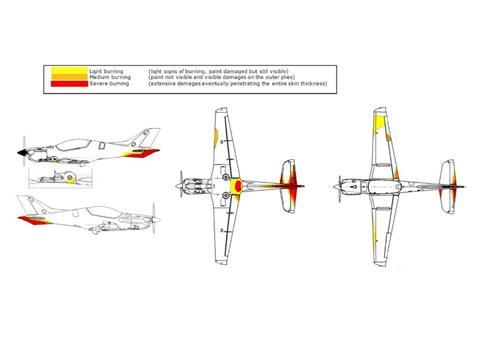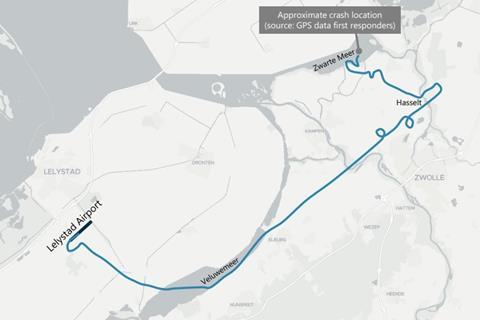Dutch investigators probing the fatal crash of a Blackshape Aircraft BK 160 are trying to determine whether external burn marks arose from an in-flight or post-impact fire.
The aircraft, which departed Lelystad airport on 28 June 2022, came down in the Zwarte Meer lake after descending rapidly from around 5,000ft.
Neither of its occupants – an instructor and a student pilot – survived the crash. The flight’s purpose was to enable the student to show they were capable of instrument flying, steep turns, and recovering from stalls or unusual attitudes, ahead of a core skills check.
The inquiry is particularly crucial because the European Union Aviation Safety Agency grounded the BK 160 in March citing uncertainty over two fatal accidents.
EASA referred to the Dutch crash as well as the loss of a BK 160 in Malaysia, in February this year. It took the grounding decision because, while the Dutch crash remained unexplained, the Malaysian investigation pointed to possible structural failure of the wing.

The Dutch Safety Board believes the Lycoming IO-320-D1B engine was “functioning normally” at the time of the Zwarte Meer accident.
But inspection of the wreckage retrieved from the water revealed burn marks, particularly in the areas of the nose-wheel, upper side of the right wing flap and aileron, and the lower left side of the left wing leading edge.
There was also “significant” burn damage to the horizontal stabiliser and elevator, the central panel of the lower fuselage, and the tail cone, says the safety board.
Although the left-hand filler cap has not been recovered, tests to explore potential fuel spillage or siphoning effects from a missing cap have not indicated evidence of problems.
“Absence of the left-hand filler cap during flight is highly unlikely to cause fuel leakage that could result in an in-flight fire,” says the inquiry.

The Dutch Safety Board is still working to identify potential sources of fuel leaks and ascertain the origin of the fire damage – whether it occurred prior to, or after, the crash.
But in the aftermath of the Malaysian loss, it says it is also carrying out a “thorough re-examination” of certain aircraft parts.
“This re-examination aims to uncover possible signs of structural failures that could contribute to the understanding of the accident,” it states.


























